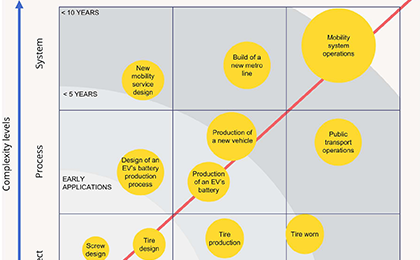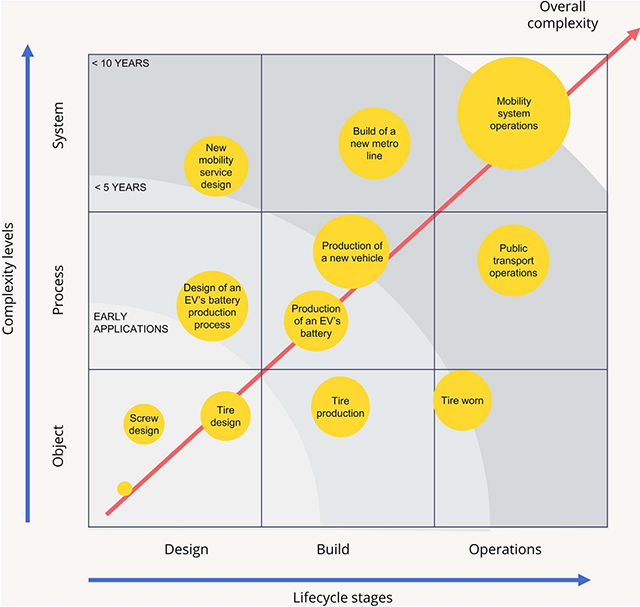


Considering Gartner’s stages of technology development, the digital twin is still a young concept, that was considered to be at the peak of inflated expectations in 2018, while some of its instances, such as “citizen twin” and “the twin of a person,” are still at the innovation trigger phase at the moment of writing the “Five Trends Emerge in Gartner Hype Cycle for Emerging Technologies (2018, 2020)”. The market forecasts indicate that the digital twin is expected to reach its plateau of productivity in the period between 2023 and 2028.
Hence, it does not surprise that existing proofs-of-concept are still at the initial stages and focused more on a simplistic, physical object, and related applications and not the full-size complex systems such as cities or urban mobility. Regarding the complexity of the digital twin, we can distinguish three main complexity levels as well as the three main lifecycle stages of a physical system with the related digital twin applications, as seen in the figure. The digital twin for the design stage implies developing the comprehensive virtual twin where all the potential scenarios and functionalities of a physical system can be examined. The use of the digital twin during the build phase implies having the virtual twin that mimics all the process and properties of the production or building process. For the operations phases, the twin would mirror the life cycles of assets and operations.

Source:https://www.sciencedirect.com/science/article/abs/pii/B9780128207178000075?via%3Dihub
Edited by Cheng Tian